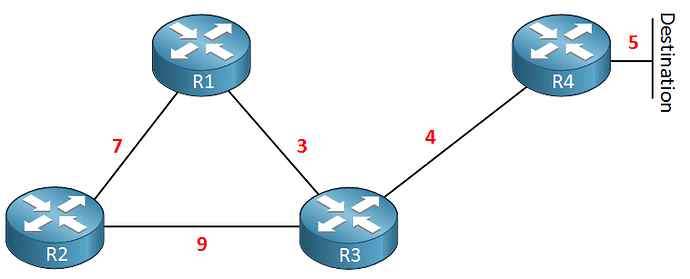Hello Christopher
Unlike OSPF, EIGRP doesn’t provide a full picture of the whole network topology to each router. But the question remains, how does a particular EIGRP router “know” about the cost of the whole path to the destination if it doesn’t have this information? Well, take a look at this network topology with the EIGRP metrics noted for each link:
When R4 advertises the destination network to R3, it says “my distance to the Destination is 5”. That’s the advertised distance. When R3 receives that information, it will add a value of 4 to that metric, because it knows that the cost of its link to R4 is 4. So when R3 records the metric to the destination, it will say 5+4=9.
When R3 advertises that network and its metric to R2, it will say, “my distance to the Destination is 9”. R2 will receive that and it will add a value of 9 to that, which is the cost of the local link to R3. So when R2 records the metric to the destination via R3, it will say 9+9=18.
So you see, each EIGRP router will simply add to the advertised metric the cost of the link through which the path was learned, thus obtaining a cumulative cost to the destination, without the need to “know” the topology of the whole network. Does that make sense?
I hope this has been helpful!
Laz
